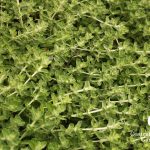What is this black rot on the bottom of my tomatoes?
Thanks to Russell Bauer for this great question! We’ve heard from many other gardeners about their tomatoes that Since we’ve heard from many gardeners, have a mushy black or brown rot on the bottom. This is blossom end rot. Thanks to Russell Bauer for sending this picture.
Blossom end rot is a common disorder in tomatoes, but may also be found in peppers and eggplant. It’s caused by a calcium deficiency in the fruit, but adding calcium to the soil won’t solve the problem. As plant cells are developing, they require a lot of calcium. And tomato fruit develops quite rapidly, sometimes depleting the plant’s available calcium supply. There are many reasons why your tomato fruit may develop faster than it can replenish its calcium, but usually the reason is irregular watering. Soil that is very wet, when you irrigate, then very dry, between waterings, leads to irregular water-uptake and fruit that develops in fits and starts. Usually blossom-end rot is only a problem for the first harvest of the season, then plant growth kind of evens out, and water-use by the plant evens out a bit too. When growth and water uptake occur at a steady rate, the fruit develops in a more even manner as well and cells in the fruit receive enough calcium to develop properly. Certain cultivars and varieties of tomatoes are more prone to blossom-end rot, so you may want to choose different varieties next year, if you have a large problem with a particular variety this year. If you continue to have issues, you might try using sulfur to acidify the soil a bit and using a fertilizer with nitrogen in the nitrate form, not the ammoniacal form. Calcium sprays to the plant don’t remedy the situation much, since not much of the calcium applied to the leaves gets into the fruit, where it’s needed.
Photo credit Aggie-horticulture.tamu.edu/Galveston

 Lee Clippard
Lee Clippard Tillery Street Plant Company Plant List
Tillery Street Plant Company Plant List Jon Hutson
Jon Hutson Daphne Richards
Daphne Richards Eric Pedley
Eric Pedley